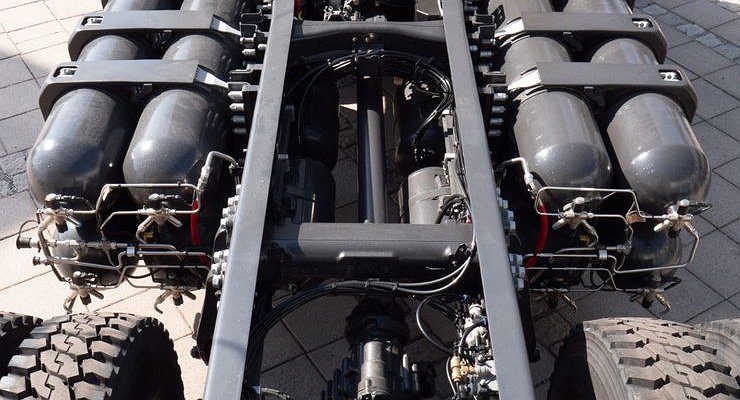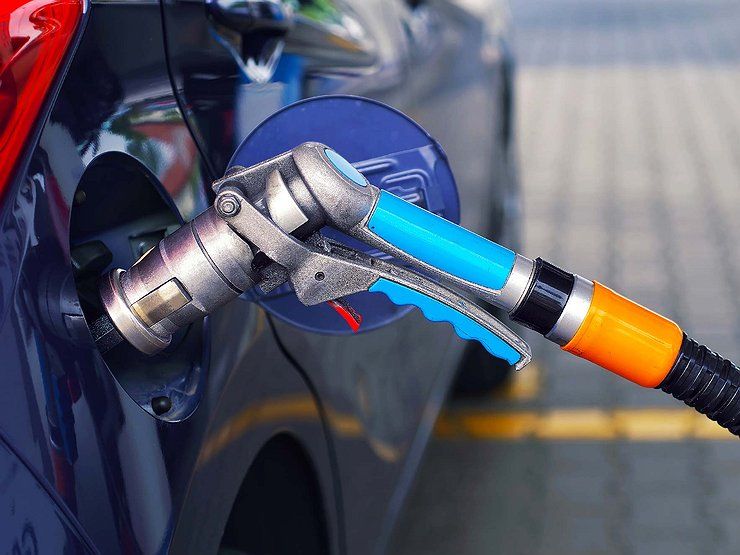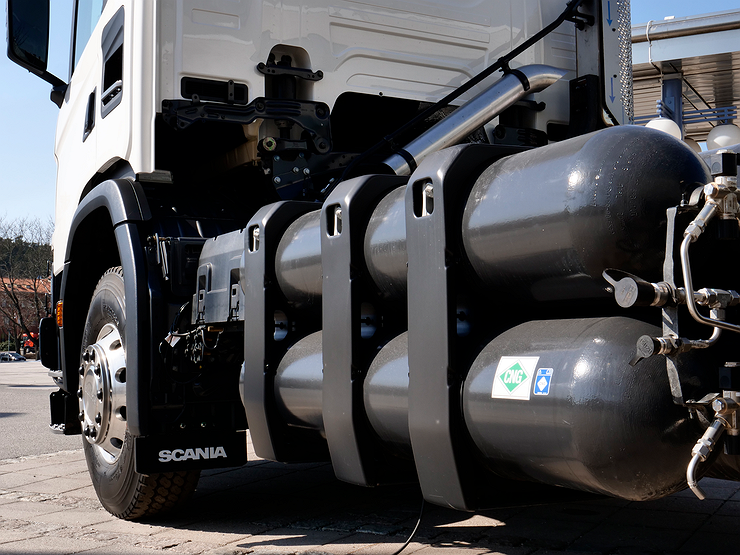Methane-throwing: Will Russian car owners be able to “switch” to gas?
- October 4, 2022
- 0
The government of the Russian Federation has finally taken a serious interest in natural gas motor fuel and has doubled the fees for the conversion of petrol and
The government of the Russian Federation has finally taken a serious interest in natural gas motor fuel and has doubled the fees for the conversion of petrol and

For companies, state aid in the form of compensation for the switch from cars to gas turned out to be highly anticipated. The need for a large-scale refurbishment of vehicle fleets has long been discussed in the commercial transport market. But something is constantly missing: sometimes the problem is the limited infrastructure – then there are only 677 working gas filling stations (CNG filling stations) in the country – in the bureaucratic mechanism for registering cars that have already been converted to gas.
Now car owners have to follow a complicated procedure: undergo an investigation into the safety of the equipment installed on the car, ratify the technical changes to the traffic police. Or turn to intermediaries whose services “eat” state subsidies. At the beginning of this year, the Federation Council already made a proposal to simplify the mechanism for registering converted cars with the traffic police. However, the doubts of the parliamentarians were caused by the insufficient number of test platforms for conducting mass exams.
And the Council of Ministers has already discussed developing a network of gas compressor filling stations and promised that another 60 CNG filling stations will be put into operation by the end of 2022. Gazprom, in turn, is talking about building 150 stations within 3 years. Incidentally, converting a car to GMT itself is not that expensive. On average, converting a truck to gas will cost up to 300,000 rubles, and a passenger car – about 100,000 rubles.
At the same time, methane is not only much cheaper than gasoline – on average, a cube of compressed gas costs 20 rubles (which corresponds to 0.9 liters of gasoline), but it is also safer for the engine and the environment. When using methane, the saving “on the tank” is about 500 rubles per 100 kilometers.
Since a company car drives tens of thousands of kilometers every year, we can speak of a saving of several millions of dollars. So for freight forwarders and taxis, whose transport units are operated 24/7, engine refitting will pay off in 3-6 months, and for private car owners – in a year or two.
Experts note that GMT approximately doubles engine life, reduces oil consumption and spark plug production. Alternative fuel in itself is not as harmful to the environment as traditional fuel: when used, the proportion of harmful exhaust gases is almost three times smaller.
Recall that on August 18, Mikhail Mishustin signed a document on a twofold increase in subsidies for the conversion of gasoline vehicles to gas fuel and the installation of related equipment as part of the Federal Energy Development Program. The new procedure implies a doubling of the subsidy standards in 2022 – from the current 24% to 48% of the total cost of the work.
Officials hope that after the implementation of support programs, the industry will reach the target of plus 100,000 methane cars per year. The current result is 30,000 cars per year. And this is not surprising, because now in Russia only 5% of car owners fill up with gas, 84% of petrol and about 10% – diesel. It is not so easy to change the “fuel” habits of Russians: methane will have to be advertised with high quality and a lot.
However, we repeat, it has enough advantages, it is better not to put anything together, if you do not take into account the still fantastic hydrogen fuel. True, you will have to work hard on the construction of CNG filling stations: they say that they are four times more expensive than gas stations (120 million rubles against 30 million rubles).
It is imperative to start reorienting the fleets of major carriers and urban transport within large regions. These players will ‘adjust’ the market for themselves and create a methane trend. In addition, infrastructure is actively being built for them. And by the time “civil interest” appears, Russia has already formed a network of gas stations, services and a simplified procedure for transferring a private car to GMT.


For companies, state aid in the form of compensation for the switch from cars to gas turned out to be highly anticipated. The need for a large-scale refurbishment of vehicle fleets has long been discussed in the commercial transport market. But something is constantly missing: either the problem is the limited infrastructure – there are only 677 working gas filling stations (CNG filling stations) in the country, or – the bureaucratized mechanism for registering cars that have already been converted to gas.
Now car owners have to follow a complicated procedure: undergo an investigation into the safety of the equipment installed on the car, ratify the technical changes to the traffic police. Or turn to intermediaries whose services “eat” state subsidies. At the beginning of this year, the Federation Council already made a proposal to simplify the mechanism for registering converted cars with the traffic police. However, the doubts of the parliamentarians were caused by the insufficient number of test platforms for conducting mass exams.
And the Council of Ministers has already discussed developing a network of gas compressor filling stations and promised that another 60 CNG filling stations will be put into operation by the end of 2022. Gazprom, in turn, is talking about building 150 stations within 3 years. Incidentally, converting a car to GMT itself is not that expensive. On average, converting a truck to gas will cost up to 300,000 rubles, and a passenger car – about 100,000 rubles.
At the same time, methane is not only much cheaper than gasoline – on average, a cube of compressed gas costs 20 rubles (which corresponds to 0.9 liters of gasoline), but it is also safer for the engine and the environment. When using methane, the saving “on the tank” is about 500 rubles per 100 kilometers.
Since a company car drives tens of thousands of kilometers every year, we can speak of a saving of several millions of dollars. So for freight forwarders and taxis, whose transport units are operated 24/7, engine refitting will pay off in 3-6 months, and for private car owners – in a year or two.
Experts note that GMT approximately doubles engine life, reduces oil consumption and spark plug production. Alternative fuel in itself is not as harmful to the environment as traditional fuel: when used, the proportion of harmful exhaust gases is almost three times smaller.
Recall that on August 18, Mikhail Mishustin signed a document on a twofold increase in subsidies for the conversion of gasoline vehicles to gas fuel and the installation of related equipment as part of the Federal Energy Development Program. The new procedure implies a doubling of the subsidy standards in 2022 – from the current 24% to 48% of the total cost of the work.
Officials hope that after the implementation of support programs, the industry will reach the target of plus 100,000 methane cars per year. The current result is 30,000 cars per year. And this is not surprising, because now in Russia only 5% of car owners fill up with gas, 84% of petrol and about 10% – diesel. It is not so easy to change the “fuel” habits of Russians: methane will have to be advertised with high quality and a lot.
However, we repeat, it has enough advantages, it is better not to put anything together, if you do not take into account the still fantastic hydrogen fuel. True, you will have to work hard on the construction of CNG filling stations: they say that they are four times more expensive than gas stations (120 million rubles against 30 million rubles).
It is imperative to start reorienting the fleets of major carriers and urban transport within large regions. These players will ‘adjust’ the market for themselves and create a methane trend. In addition, infrastructure is actively being built for them. And by the time “civil interest” appears, Russia has already formed a network of gas stations, services and a simplified procedure for transferring a private car to GMT.
Source: Avto Vzglyad
I’m Sandra Torres, a passionate journalist and content creator. My specialty lies in covering the latest gadgets, trends and tech news for Div Bracket. With over 5 years of experience as a professional writer, I have built up an impressive portfolio of published works that showcase my expertise in this field.